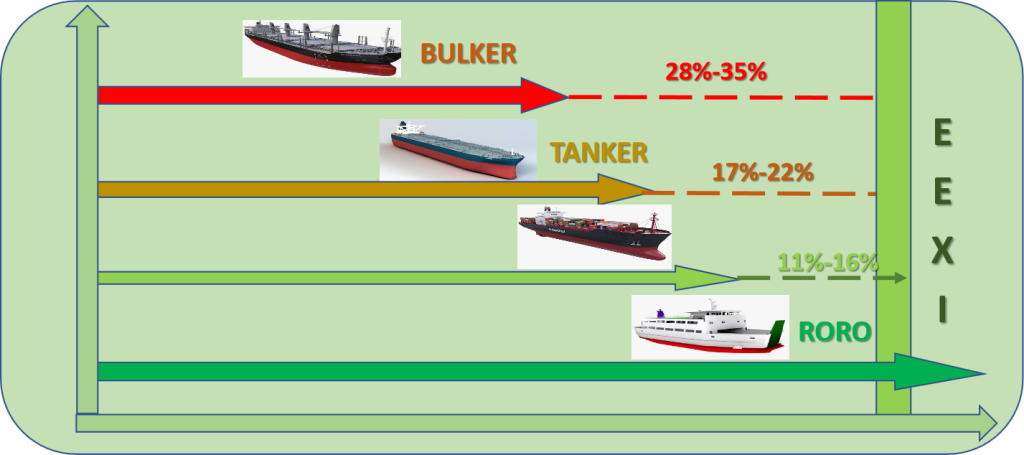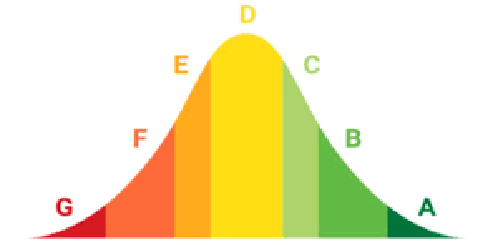verticals
Maritime Decarbonization
Reliability and Transparency in Maritime
Engineering
What is EEXI ?
What is CII ?
What is GHG ?
EEXI / CII Requirements ?
Process of Compliance with EEXI Regulation ?
Some Important facts: Our study on 100 ships reveals
Known solutions..
Cybermarine proposition on EEXI
Cybermarine proposition on CII & GHG
What is EEXI ?
- The Energy Efficiency Existing Ship Index, is a new IMO regulation that aims to reduce Carbon (CO2) emission of existing vessels. The target is to reduce carbon intensity by 40% within 2030 and by 50% in total (70% intensity) within 2050.
- A short-term, mid-term and long-term measures has been derived to achieve this goal. Short-term measures are meant to be set into force by 1st Jan, 2023. Between 1st Jan and 31st Dec, as per the drydocking schedule ships more than 400 GT need to be complied with EEXI else, It will be detailed at next Port and Fined.
Attained EEXI = [gCO2/t. nm]
EEXI = CO2 Emission
Transport Work
- The EEXI is a design index, not an operational index. In principle, the EEXI describes the CO2 emissions per cargo ton and mile.
- The emissions are calculated from installed power of the main engine, the corresponding specific fuel oil consumption of the main engine and of auxiliary engines, and a conversion factor between fuel and the corresponding CO2 mass.
- The transport work is determined by capacity, which is usually the deadweight of a ship and the ship speed related to the installed power.
What is CII ?
- The Carbon Intensity Indicator is an Operational Index, to establish annual operational carbon intensity rating of each ship of 5000 GT and above.
- In order to determine this rating ships are set to measure and document their actual annual operational CII against the required annual operational CII, to ensure their continuous progress on the decarbonization path.
- The Fuel Oil Consumption Data Collection System (DCS) is mandatory for annual reporting of CO2 emissions for all ships above 5,000 GT.
- A – indicating a major superior
- B – minor superior
- C – moderate
- D – minor inferior
- E – inferior performance level
- In principle, the performance level would be recorded in the Ship Energy Efficiency Management Plan (SEEMP).
- The ships rated with A or B are to be provided with bonuses from administrations, port authorities, and stakeholders. In contrast, ships rated D for three consecutive years, or E would have to submit a corrective action plan and accordingly SEEMP need to be updated and approved.
What is GHG ?
- The Green House Gas rating implemented by RightShip, is a statistical approach which compares a ship’s theoretical CO2 emissions relative to peer vessels of a similar size and type using an easy to interpret “A – G” scale.
- Ship’s having “A” grade will be rewarded with much commercially attractive Charter option, with their results clearly displayed in “RightShip” platform, while it would be difficult for an owner to find a good charter for their ship having “D” grade or below.
- Rightship is a ship approval system maintained by 3 of the major operators in the coal, agro and iron ore market – BHP, Cargill and Rio Tinto.
- Its aim is to identify suitable vessels for that trade. Significant dry bulk operators in, for example Europe, Australia and Brazil, require vessels to be approved by Rightship.
EEXI / CII Requirements
APPLICABILITY OF REGULATIONS (EEXI/EEDI/CII)
Type | Required EEXI/EEDI | Required CII |
BULK CARRIER | > = 10,000 DWT | >= 5,000 GT |
GAS CARRIER | > = 2,000 DWT | >= 5,000 GT |
TANKER | > = 10,000 DWT | >= 5,000 GT |
GENERAL CARGO SHIP | > = 3,000 DWT | >= 5,000 GT |
REFRIGERATED CARGO CARRIER | > = 3,000 DWT | >= 5,000 GT |
COMBINATION CARRIER | > = 4,000 DWT | >= 5,000 GT |
LNG CARRIER | > = 10,000 DWT | >= 5,000 GT |
RO-RO CARGO SHIP (VEHICLE CARRIER) | > = 10,000 DWT | >= 5,000 GT |
RO-RO CARGO SHIP | > = 1,000 DWT | >= 5,000 GT |
RO-RO PASSENGER SHIP | > = 250 DWT | >= 5,000 GT |
PASSENGER SHIPS | NA | NA |
CRUISE PASSENGER SHIPS WITH CONVENTIONAL PROPULSION | NA | >= 5,000 GT |
CRUISE PASSENGER SHIP WITH NON-CONVENTIONAL PROPULSION | > = 25,000 DWT | >= 5,000 GT |
OTHER SHIP TYPES | NA | NA |
Process of Compliance with EEXI Regulation
- Preparation of Preliminary EEXI Technical File of, i.e. Calculation of EEXI
- In case of non-compliance, a feasibility study to arrive on different optional solutions
- Feasibility analysis of each potential solutions techno-functionally
- Approaching Class for a cognizance about the selected solution
Compliance with the EEXI Regulations can be achieved in stepwise manner in discussions with owner / operators and approval authorities (Class / Flag).
- Execution of proposed solution / Modification (Design Approval of Solution)
- Final EEXI Technical File preparation & Approval of EEXI Technical File by class
- Obtaining International Energy Efficiency Certificate (IEEC) from Flag State Authority International Air Pollution Prevention Certificate (IAPPC)
- Preparation & approval of SEEMP.
Some Important facts: Our study on 100 ships reveals

- Bulk Carrier. Tankers and Gas Carriers will mostly fall short.
- General Cargo and LNG Carriers are mid-way.
- Containers at higher deadweight are also mid-way.
- Ro-Ro looks very comfortable.
Known solutions..
- Engine Derating / Engine Power Limitation (EPL) – Cannot be a permanent solution, Engine Maintenance cost will be very high
- Changing to Dual Fuel or converting to LNG driven Engine – Space crunch, big investment, Technically excellent but not a feasible solution commercially
- Installation of Energy Saving Devices – effective towards EEXI – 3% – 5% only.
- Length Extension – effective towards EEXI – 2%-5% only.
- Using renewable energy (Wind / Solar / Hydro) – upto 7.5% only.
Vessels which are falling short to 10% can go for ESDs and Renewable
Cybermarine proposition on EEXI
A team of qualified, capable an experienced R&D professionals at Cybermarine has been researching on this issue since 2018 and fully aware about all IMO guidelines and amendments and thus able to come up with a different perspective in order to give a “one stop solution” for EEXI non-compliances. Our solutions would be “out of box” in nature, “unique” in deliberations and “customized for each vessel” keeping the following factors into considerations:
— Vessel age — Speed loss vs Engine Power Limitation —
— Strength & Future Life of Vessel — Cost vs ROI —
— Installation Time — Vessel Route & Weather —
- Making Client’s aware about the requirements of IMO
- Getting their vessel’s EEXI calculation done
- Helping them to select the best techno-commercially feasible solution for their vessel in case of a non-compliance
- Obtaining Class / Flag approval of documents
Cybermarine proposition on CII & GHG







